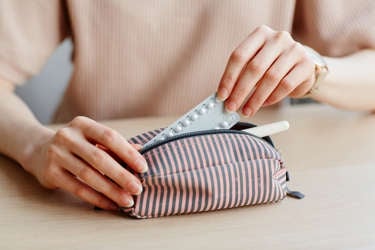What is an ECG?
ECG stands for electrocardiogram. It measures the electrical activity of your heart to see how well it is working. An ECG does not hurt.
Why do I need an ECG?
You may have an ECG if your treatment is known to have heart-related side effects. You may also have an ECG during or after treatment to see if treatment has changed how your heart works.
How is an ECG done?
An ECG is done by a nurse or a specially trained person called an ECG technician. You will need to take off your shirt and wear a gown that opens in the front. They will respect your privacy during this test. You will lie on a bed and the nurse/technician will place 10 stickers with metal buttons (electrodes) on your skin. Six will be placed on your chest over your heart and one will be placed on each of your arms and legs.
The electrodes are connected by wires (leads) to the ECG machine. You will need to stay very still for about one minute while the ECG machine makes a recording that looks like a graph. The technologist will remove the stickers when the test is over.
An ECG usually takes about 15 minutes.
A cardiologist (heart specialist) will look at the graph. They will send a report to your doctor. Your doctor will share the results with you and your parents.
What is an echocardiogram?
An echocardiogram (or "echo") is a test that uses sound to make a picture of your heart. This is similar to how an ultrasound is done. It does not hurt and is totally safe.
Why do I need an echocardiogram?
You may have an echocardiogram before starting treatment to make sure that your heart is working properly. You may also have an echocardiogram during or after treatment to see if treatment has changed how your heart works.
How is an echocardiogram done?
The echocardiogram is done by a specially trained person called a sonographer (say: suh-NOG-raf-er). You will need to take off your shirt or wear a gown that opens in the front. You will then lie on a special bed. The sonographer will attach three electrodes (stickers) to your chest and arms. The stickers are connected to the echo machine by a cord. This records your heartbeat.
The echo machine looks like a big box with a screen. It is attached to the probe, which looks like a microphone. The probe takes pictures of your heart, which show up on the screen. The sonographer will put gel on your chest and tummy. The gel will feel cold but it is necessary to get a clear picture. Then, they will touch the probe to your skin. The gel helps the probe slide and take clearer pictures. The sonographer will move the probe around to get pictures from a few angles.
When the pictures are finished, the sonographer will show them to a cardiologist who will decide if you need more pictures. When the cardiologist says the pictures are ok, the test is finished and you can wipe off the gel.
An echocardiogram usually takes between 30 and 90 minutes.
The cardiologist will look at the pictures and then send a report to your doctor. Your doctor will share the results of the test with you and your parents.







